Wine enthusiasts know that the secret to a great tasting wine lies not only in the choice of grapes and the winemaker's skill, but also in the conditions under which the wine is stored.
A well-organized and maintained wine fridge can make all the difference in preserving the delicate balance of flavors and aromas that make each bottle unique.
Are you ready to elevate your wine experience and ensure that each bottle you open is at its peak? If so, learning how to load a new wine cooler or fridge is essential.
In this comprehensive guide, we will walk you through every aspect of loading and maintaining your wine fridge to create the perfect environment for your collection. From organizing and categorizing your wines to the ideal storage conditions and loading techniques, this guide on how to load a wine fridge has you covered.
So grab a glass and let's get started!
Short Summary
- Organize and categorize your wine collection for optimal storage conditions.
- Label wines to keep track of inventory, enjoy them at their peak, and avoid surprises.
- Consider size, capacity & features when choosing a wine fridge to ensure the perfect fit for your needs.
Organizing Your Wine Fridge
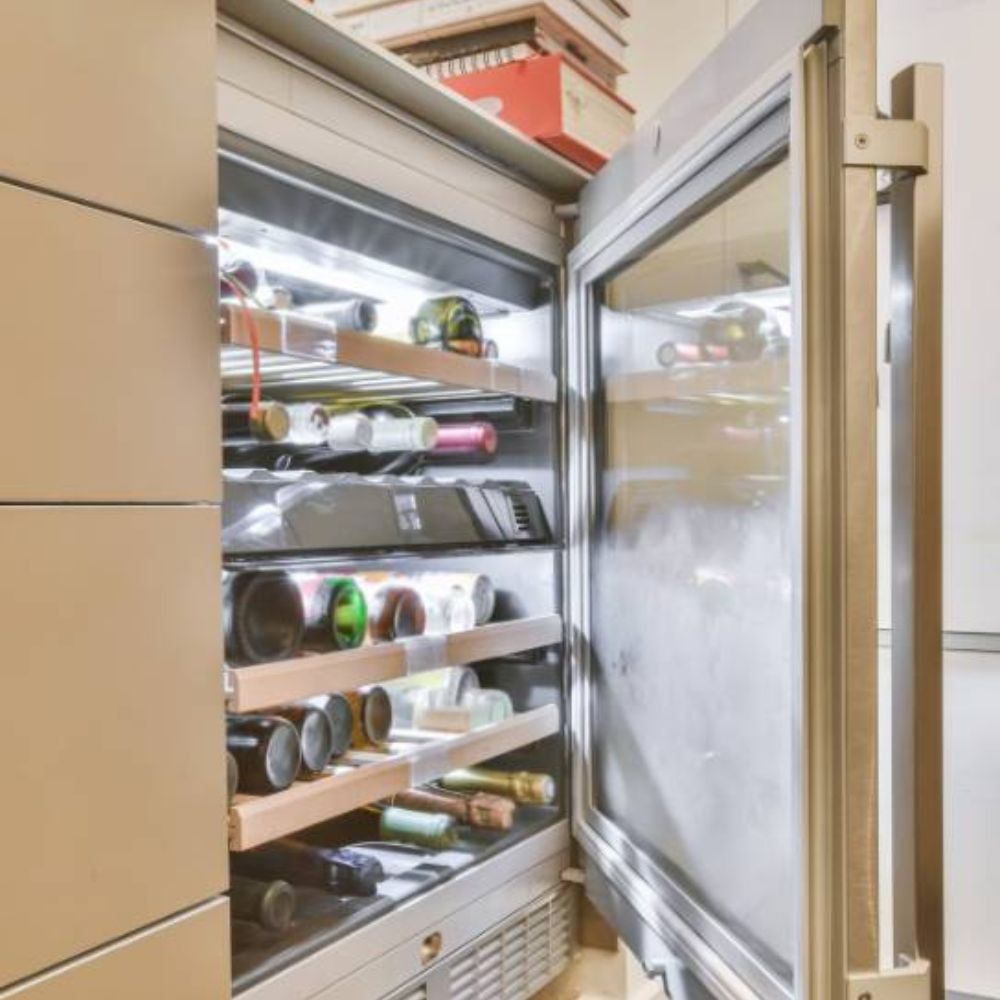
The first step in creating the perfect environment for your wine collection is organizing your wine fridge. A well organized fridge not only makes it easier to find the right bottle when you need it, but also ensures that your wines are stored in the best possible conditions. With a dedicated wine fridge, you can categorize, arrange, and label your wines, making it a breeze to access your favorite bottles when the time comes.
To start organizing your wine fridge, it's essential to have a clear understanding of your wine consumption habits and the types of wine you enjoy most. This will help you allocate storage space and make informed decisions about which wines to store for short-term use, long-term aging, or special occasions.
By keeping your collection organized, you can quickly locate the perfect bottle to complement any meal or celebration.
Categorize by Wine Type
Grouping your wines by type is a practical and visually appealing way to organize your collection. By categorizing your wines as red, white, rosé, sparkling, dessert, or fortified, you make it easier to find the right bottle for any occasion.
This not only saves you time when selecting a wine, but also ensures that you can quickly identify and replace any missing bottles in your collection.
In addition to making your wine fridge more accessible, categorizing your wines by type also helps you better understand the unique storage requirements of each variety. Different types of wine may require different temperatures and storage conditions, so knowing which wines are stored together can help you maintain the optimal environment for each bottle.
Arrange by Purpose
Arranging your wine bottles by their intended purpose is another effective way to keep your collection organized. By separating bottles meant for short-term storage, long-term aging, and special occasions, you can easily keep track of your inventory and ensure that you're using the right bottle for the right occasion.
This aging process not only helps you enjoy your wines at their peak, but also prevents you from accidentally opening a bottle that's meant for aging.
To keep your collection organized by purpose, consider labeling each bottle with its intended use or creating a list of the contents of your wine fridge. This will help you quickly identify which bottles are ready for immediate consumption and which ones need more time to mature.
By arranging your wines by purpose, you can avoid any unpleasant surprises and ensure that every bottle you open is a true delight.
Label Your Wines
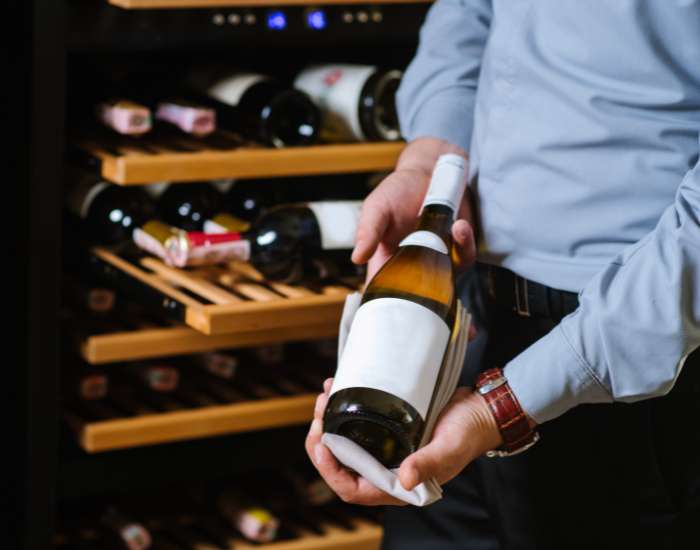
Labeling your wine bottles is crucial for keeping your collection organized and easily accessible. A well-labeled bottle provides essential information about the wine's origin, vintage, grape variety, and winemaker's philosophy, helping you make informed decisions when selecting a wine to serve or store.
Moreover, labeling your wines can help you remember the contents of each bottle, ensuring that you can quickly locate the perfect wine for any occasion.
When labeling your wines, it's important to use waterproof labels that can withstand the humidity in your wine fridge. Additionally, make sure that the labels are easily visible and legible to ensure quick identification.
By labeling each bottle with its name, vintage, and other relevant information, you can keep your collection organized and always know what's inside.
Ideal Storage Conditions
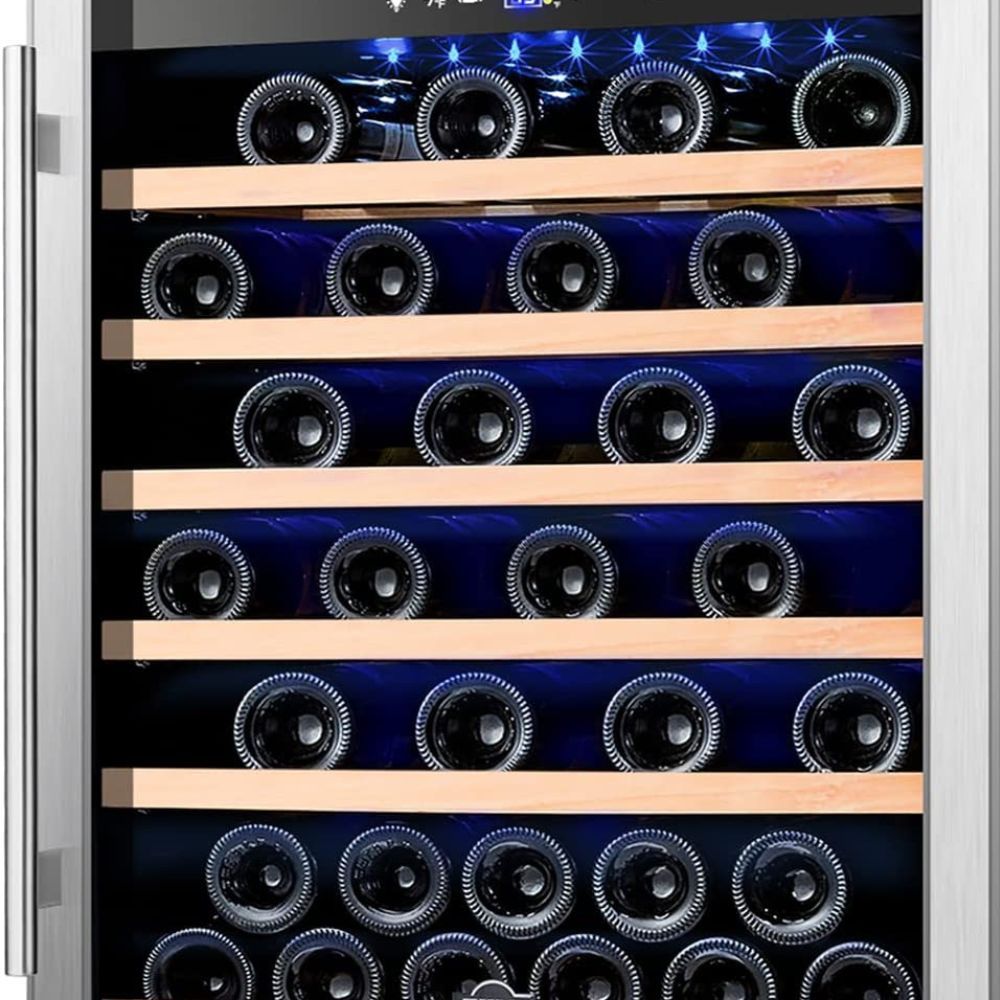
Now that your wine fridge is organized, it's time to focus on creating the perfect environment for your collection. Wine is a delicate and complex beverage that requires specific storage conditions to preserve its quality and flavor.
To achieve this, you need to maintain a consistent temperature, the right humidity levels, and protect your wines from direct light exposure.
Understanding these ideal storage conditions is crucial for any wine enthusiast looking to maintain the integrity of their collection.
By adhering to these guidelines, you can ensure that your wines are stored in the best possible environment, allowing them to mature gracefully and reach their full potential.
Temperature
One of the most critical factors in wine storage is maintaining a consistent temperature. Fluctuations in temperature can cause the cork to expand and contract, allowing oxygen to enter the bottle and spoil the wine.
To avoid this, it's essential to store your wines at a consistent temperature of 50-55°F (10-13°C). This temperature range is ideal for preserving the delicate flavors and aromas of both red wines and white wines.
To ensure that your wine fridge maintains a consistent temperature, consider using a separate thermometer to monitor the temperature inside the fridge. If you notice any fluctuations, adjust the temperature controls accordingly.
By maintaining wine refrigerator at the right temperature, you can protect your wines from premature aging and ensure that each bottle is enjoyed at its best.
Humidity
Humidity plays a crucial role in wine storage, as it can affect the condition of the cork and the labels on your bottles. Ideally, the humidity inside your wine fridge should be maintained between 60-68%, as this range helps to keep the cork moist and prevent it from drying out. A dried-out cork can allow oxygen to enter the bottle, which may spoil the wine.
To maintain optimal humidity levels in your wine fridge, consider using a hygrometer to monitor the humidity inside the fridge. If the humidity levels are too low, you may need to use a humidifier to increase the humidity. By keeping humidity levels within the ideal range, you can protect your wines from damage and ensure that they remain in top condition.
Light Exposure
Light exposure is another important factor to consider when storing your wines, as direct sunlight and UV exposure can damage the natural sediment and flavors of the wine. Wine is sensitive to light, especially ultraviolet (UV) light, which can cause the wine to develop off-flavors and lose its delicate nuances.
To protect your wines from the harmful effects of light, it's essential to store them in a dark and cool environment.
When choosing a suitable location for your wine fridge, avoid placing it in direct sunlight or near a window where UV rays can penetrate the glass. If your wine fridge has a glass door, make sure it's made from UV-protective glass to shield your wines from harmful light exposure.
By protecting your wines from the damaging effects of light, you can preserve their unique flavors and ensure they age gracefully.
Loading Techniques
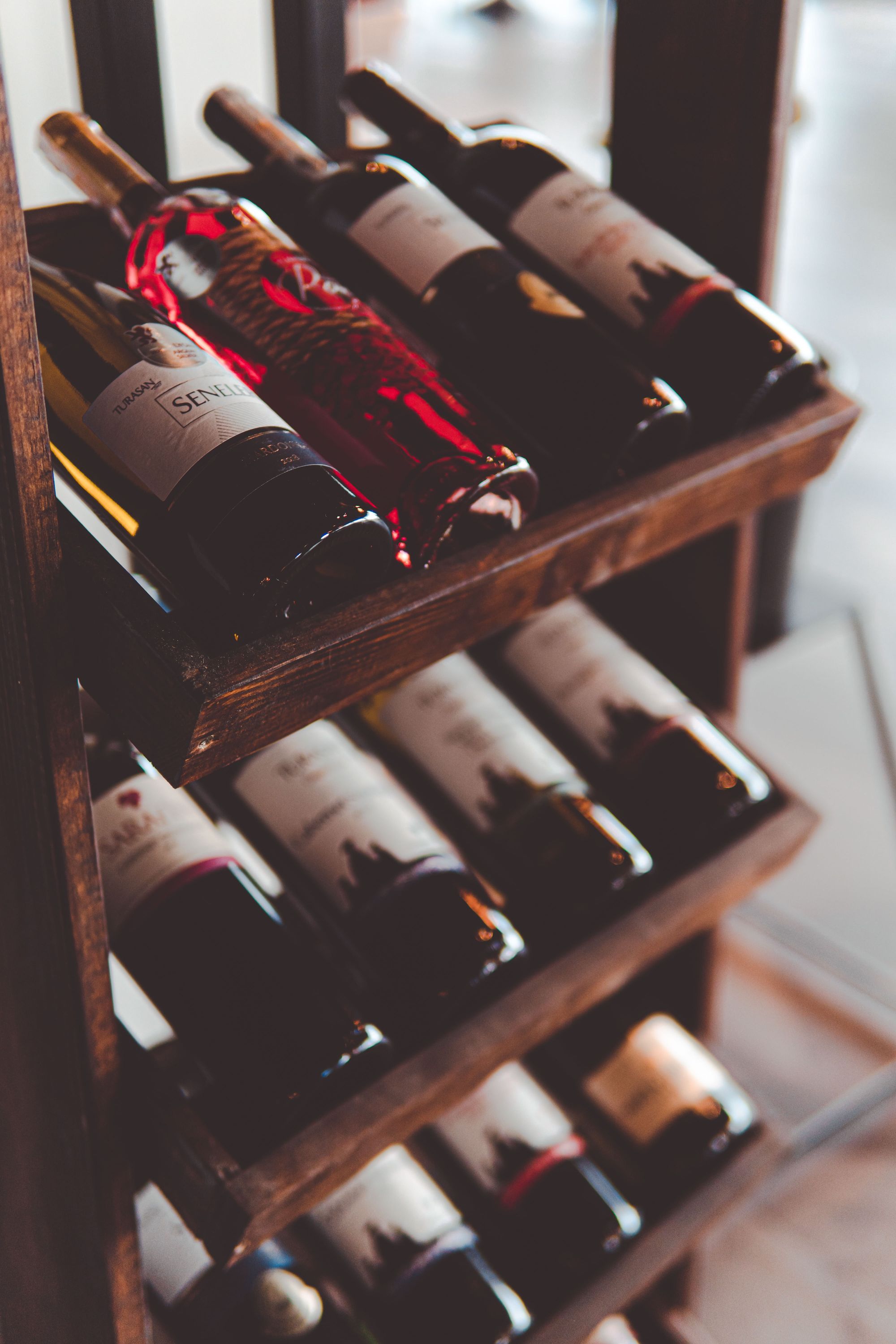
Once you've organized your wine fridge and created the ideal storage conditions, it's time to load your wine bottles in the most efficient and effective way. The way you load your wine fridge can impact the overall organization, accessibility, and even the condition of your wines.
In this section, we'll explore the best loading techniques for your wine fridge, including horizontal storage, the use of wine racks, and stacking bottles. These loading techniques will help you maximize the storage space in your wine fridge and ensure that your bottles are stored securely.
By following these best practices, you can keep your wine collection organized and easily accessible, allowing you to enjoy your favorite wines at their peak.
Horizontal Storage
Storing your wine bottles horizontally is the most effective way to ensure that the corks remain moist and the wine stays fresh. When a cork dries out, it can allow oxygen to enter the bottle, which can lead to premature aging and spoilage. Horizontal storage keeps the cork in contact with the wine, preventing it from drying out and maintaining the integrity of the seal.
While horizontal storage is essential for bottles with traditional corks, it's not necessary for bottles with screw-top closures. However, it's still a good idea to store all your bottles horizontally, as it allows for more efficient use of space in your wine fridge and makes it easier to access and identify each bottle.
Use of Wine Racks
Wine racks are an excellent tool for organizing your wine bottles and maximizing the storage capacity of your wine fridge.
These racks come in various shapes and sizes and are typically made from wood or metal, allowing you to customize your storage solution to fit your specific needs.
By utilizing wine racks, you can keep your bottles organized and easily accessible, ensuring that you always have enough room and the perfect wine on hand for any occasion.
When choosing a wine rack, consider the size and shape of your wine bottles, as well as the available space in your wine fridge. Some racks are designed specifically for larger or smaller bottles, while others can accommodate a mix of different sizes.
By selecting the right wine rack for your collection, you can optimize the storage space in your wine fridge and keep your bottles secure and organized.
Stacking Bottles
Stacking bottles is another effective loading technique that can help you make the most of the limited space in your wine fridge. By stacking bottles on top of each other, you can maximize the vertical space in your fridge and store more bottles than you would be able to otherwise.
However, it's essential to ensure that your bottles are stable and secure when stacking them to prevent accidents and damage.
To stack your wine bottles safely, place them in the fridge in a way that prevents contact between the bottles and use dividers or racks to hold them in place. This will help to keep your bottles stable and prevent them from shifting or falling over.
By stacking your bottles efficiently and securely, you can make the most of your wine fridge's capacity and keep your collection organized and accessible.
Wine Fridge Maintenance
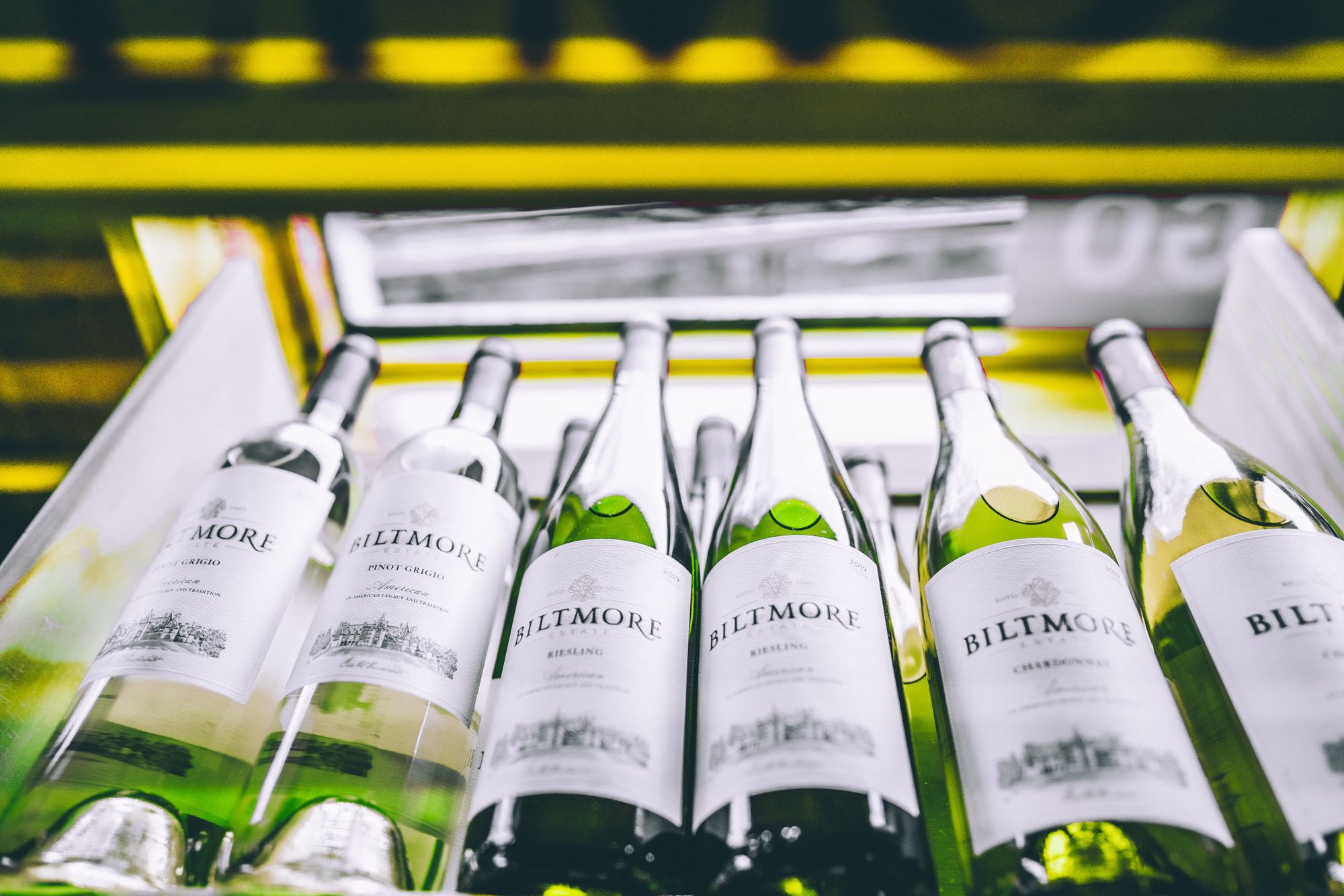
Maintaining your wine fridge is essential to ensure that it continues to provide the ideal storage conditions for your wine collection. By regularly cleaning your fridge, ensuring proper ventilation and airflow, and monitoring the temperature and humidity levels, you can keep your wine fridge operating at peak performance and protect your wines from spoilage and damage.
In this section, we'll discuss the best practices for maintaining your wine fridge and ensuring that it remains a safe and optimal environment for your collection. By following these maintenance tips, you can prolong the life of your wine fridge and keep your wines in prime condition for years to come.
Regular Cleaning
Cleaning the interior of your wine fridge regularly is essential to remove dust and debris that can accumulate over time. A dirty wine fridge can not only impact the efficiency of the cooling system, but also affect the quality of the air inside, potentially harming your wines. To keep your wine fridge clean and functioning properly, it's important to clean the interior surfaces at least once or twice a year.
When cleaning your wine fridge, use a soft cloth or sponge with either water or soap to prevent damage to the surfaces. For the interior, a mild solution of soap, warm water, and baking soda is recommended. Avoid using vinegar or alcohol-based cleaners, as these can be too harsh for the delicate surfaces of your wine fridge.
By regularly cleaning your wine fridge, you can ensure that it remains a clean and safe environment for your wine collection.
Ventilation and Airflow
Proper ventilation and airflow are crucial for maintaining optimal temperature and humidity levels in your wine fridge. Without adequate ventilation, heat and moisture can become trapped inside the fridge, leading to fluctuations in temperature and humidity that can harm your wines.
To ensure proper airflow, make sure that there is at least 1-2 inches of space at the rear of the wine cooler and that the vents are not blocked or obstructed.
In addition to maintaining proper ventilation, it's important to periodically check the temperature and humidity levels inside your wine fridge. If you notice any fluctuations or deviations from the ideal ranges, adjust the temperature controls or use a humidifier or dehumidifier as needed.
By ensuring proper ventilation and airflow, you can maintain optimal storage conditions for your wine collection and protect your wines from spoilage and damage.
Temperature and Humidity Monitoring
Frequent monitoring of the temperature and humidity levels inside your wine fridge is essential to ensure the optimal storage conditions for your wine collection. Fluctuations in temperature and humidity can lead to premature aging and spoilage, so it's important to keep a close eye on these factors to protect your wines.
To monitor the temperature and humidity levels in your wine fridge, consider using a separate thermometer and hygrometer. These devices can provide accurate readings of the conditions inside your fridge, allowing you to make any necessary adjustments to maintain the ideal environment for your wines.
By regularly monitoring the temperature and humidity levels, you can ensure that your wine collection remains in prime condition and ready for enjoyment.
Choosing the Right Wine Fridge
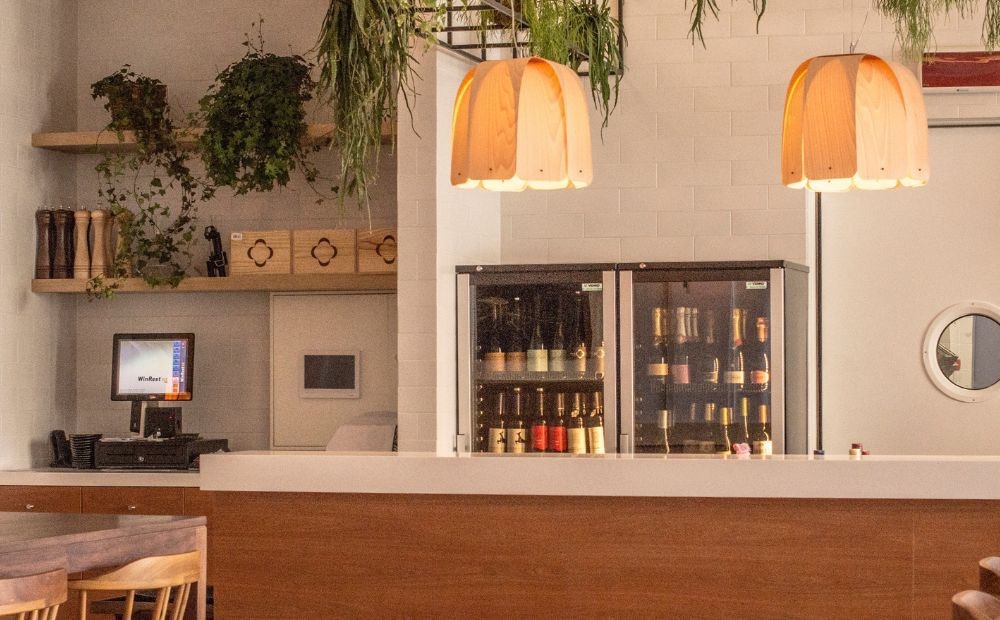
With so many different wine fridges on the market, it can be challenging to select the perfect one for your needs. To ensure that you choose the right wine fridge for your collection, you should consider factors such as whether you need a built-in or freestanding wine cooler unit, the capacity and size of the fridge, and any additional features that can enhance your wine storage experience.
In this section, we'll guide you through the process of choosing the right wine fridge for your needs, taking into account your available space, budget, and wine collection. By carefully considering these factors, you can find the perfect wine fridge to store and preserve your wines, ensuring that you always have the perfect bottle on hand for any occasion.
Built-in vs. Freestanding
When choosing a wine fridge, one of the first decisions you'll need to make is whether you want a built-in or freestanding unit. Built-in wine fridges are made with convenience and style in mind.
They can easily fit under your counter or be seamlessly integrated within the cabinetry of your home. These units typically feature front ventilation and can be installed flush with your existing cabinetry for a sleek appearance.
On the other hand, freestanding wine fridges offer more flexibility in terms of placement and can be easily relocated if needed. Both built-in and freestanding wine fridges have their advantages and disadvantages, so it's important to carefully consider your specific needs and preferences before making a decision.
If you have limited space or prefer a more integrated look, a built-in wine fridge may be the best option for you. However, if you require more flexibility in terms of placement, a freestanding wine fridge may be a better fit.
Capacity and Size
The capacity and size of your wine fridge should be determined by the size of your wine collection and the available space in your home. Wine fridges come in various sizes, ranging from compact units that can hold just a few bottles to large, multi-zone fridges that can accommodate hundreds of bottles.
When selecting the right capacity and size for your needs, consider both the current size of your collection and any future growth.
For those with limited space, slimline or integrated wine fridges may be the best option, as they can fit into tight spaces while still providing ample storage for your wine collection. On the other hand, if you have a large collection or plan to expand it in the future, a larger wine fridge with multiple temperature zones may be more suitable.
By carefully considering your storage needs and available space, you can choose the perfect wine fridge for your collection.
Additional Features
In addition to capacity and size, there are several additional features that can enhance your wine storage experience and make your wine fridge more user-friendly. Some popular features to consider include LED lighting, digital touch screen controls, adjustable temperature settings, and UV-protective glass.
These features can help your wine coolers maintain a consistent temperature, protect your wines from damaging light, and make it easier to access and enjoy your collection.
When selecting a wine fridge, consider which additional features are most important to you and prioritize those in your search. While these features may add to the overall cost of the unit, they can significantly improve your wine storage experience and ensure that your wines are always stored in the best possible conditions.
Summary
In conclusion, properly loading and maintaining a wine fridge is essential for preserving the quality and flavor of your wine collection. By organizing your wines, maintaining ideal storage conditions, and employing effective loading techniques, you can create the perfect environment for your wines to mature and develop their full potential.
Additionally, choosing the right wine fridge that suits your specific needs and preferences can greatly enhance your wine storage experience.
With this comprehensive guide, you now have all the knowledge and tools necessary to organize, maintain, and choose the perfect wine fridge for your collection. So, go ahead and raise a glass to your well-organized and expertly stored wines, knowing that each bottle you open will be enjoyed at its peak.
If you are looking for a wine fridge then our blog post on the best wine fridge may be of interest to you.
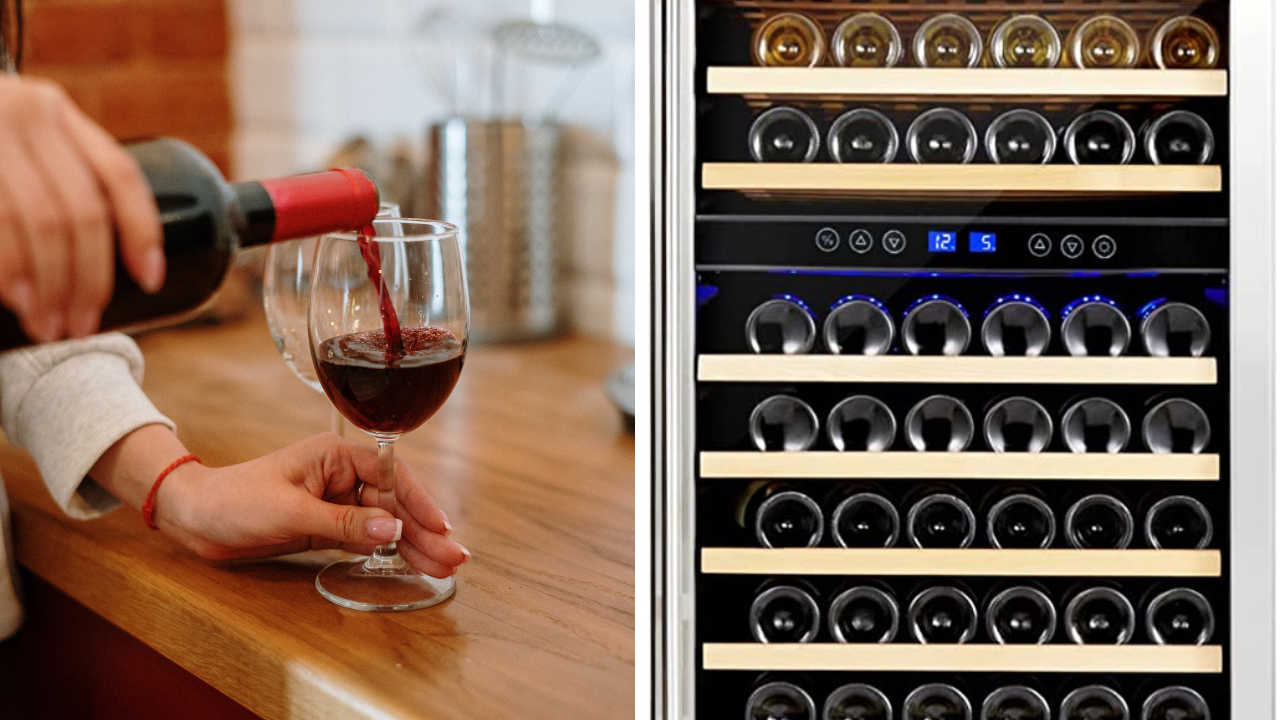
f you are looking to store a large wine collection you may want to check out our article on the best large fridge.
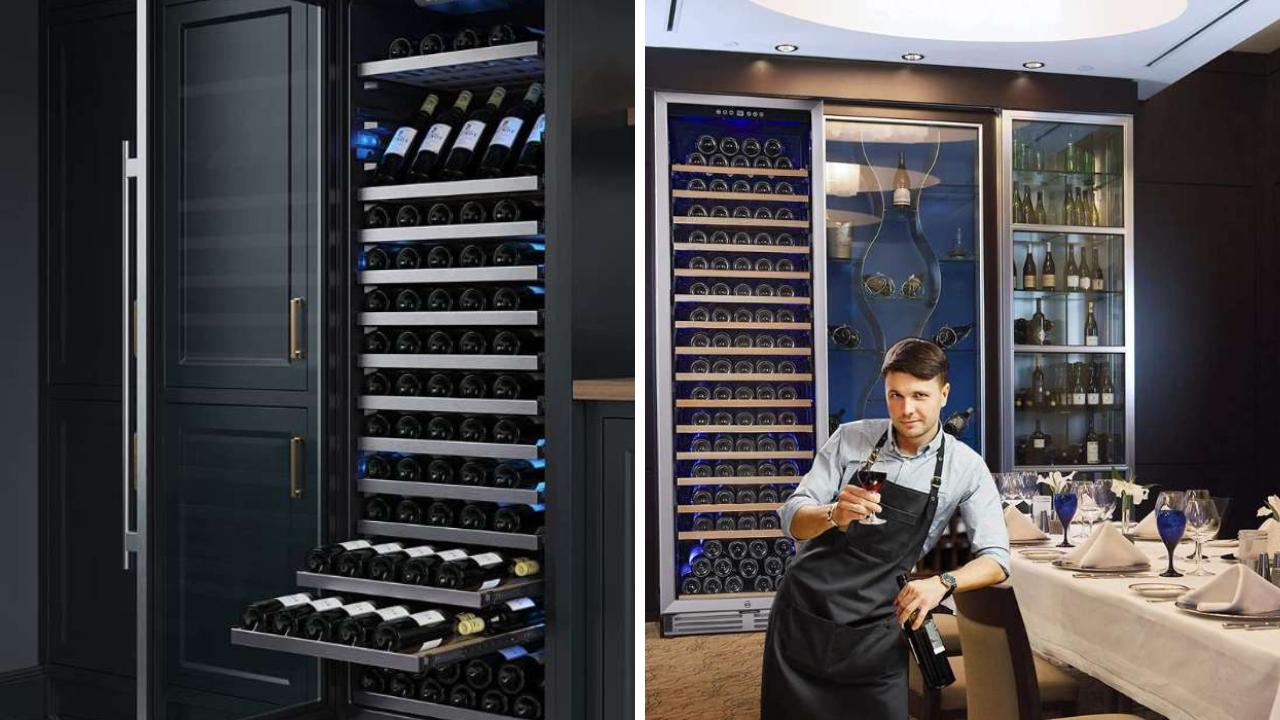
If you are looking for a wine cooler for under the counter then check out our top picks for the best under counter wine fridge.
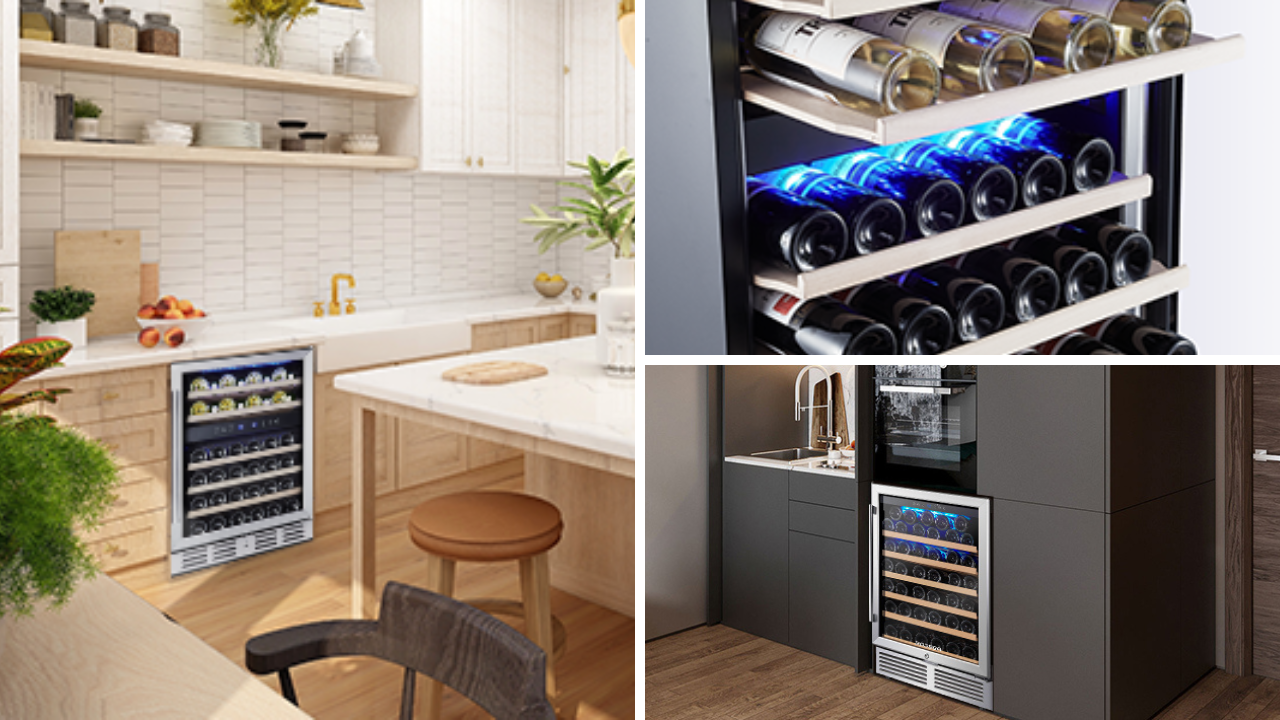
If you are looking for a smaller Wine Cooler, check out our blog post on our top picks for the Best Slim Wine Fridge.
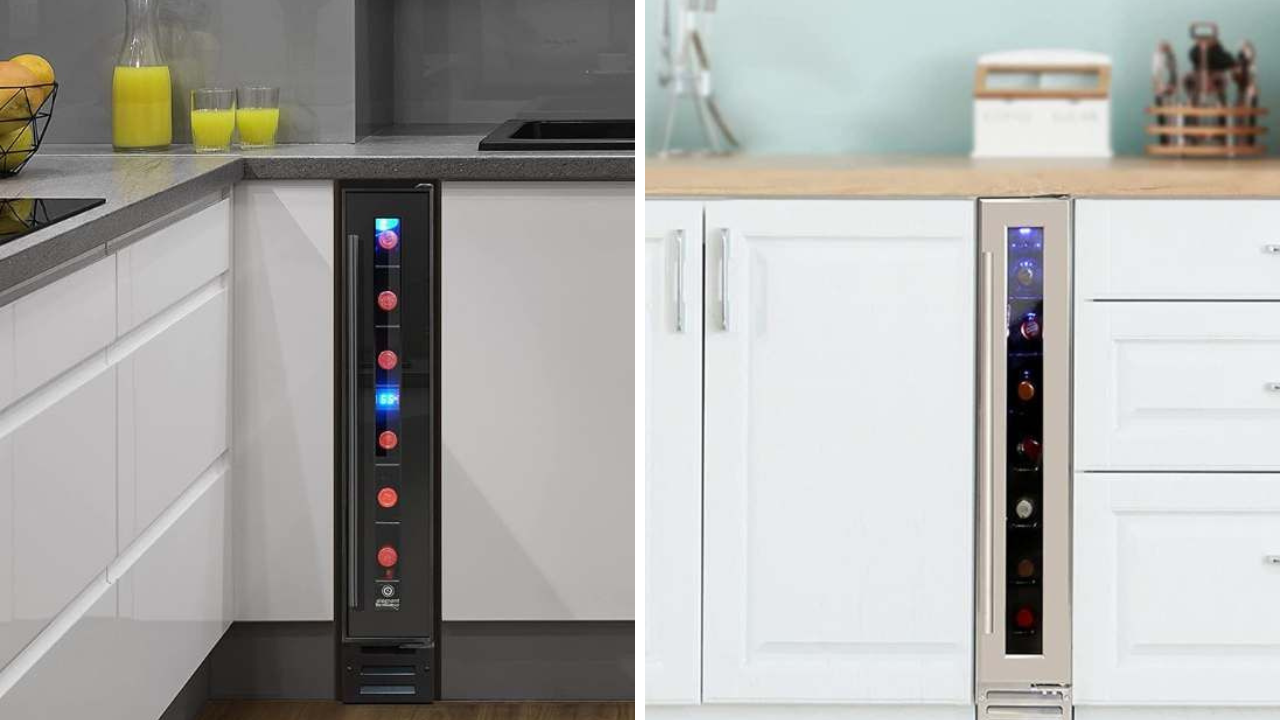
Frequently Asked Questions
What is the best way to stack a wine fridge?
For optimal storage, the best way to stack a wine fridge is by arranging bottles according to their intended ageing period; mature wines should be at the back of the shelves, and short-term bottles should be towards the front. This will ensure efficient wine organization and proper preservation of your favourite labels.
How do you arrange wine bottles in a wine fridge?
When arranging bottles in a wine fridge, it's important to store them horizontally to keep the corks moist. You may also want to organize wines by country or region of origin, grouping together bottles with similar tastes for more efficient storage. Doing this will help you keep your collection in good order and ensure the wine maintains its quality.
Does red wine go on top or bottom of wine fridge?
It is recommended that red wine be stored at the bottom of the wine fridge, since its ideal temperature is 56 degrees Fahrenheit. The top of the fridge should be set to 46 degrees, for white wines and sparkling. Therefore, red wine should be stored on the bottom of the wine fridge.
How cold does a wine fridge get?
For optimum storage conditions, most experts recommend setting your wine fridge to 55°F. Therefore, it is safe to conclude that a wine fridge should be set at temperatures around 55°F for optimal freshness and flavor.
👉 Related Reads: How Cold Does a Wine Fridge Get, Wine Fridge vs Wine Cooler, White Wine Temperature, Red Wine Temperature, Wine Fridge Temperature, How to Drink Wine, How to Tell if Wine is Bad, How to Serve Wine Properly, How to Decant Wine, Storing Wine at Home, How to Choose a Wine Fridge, Why is My Wine Fridge Not Cooling?, How long does a wine fridge last?, Built in vs Freestanding Wine Fridge,










